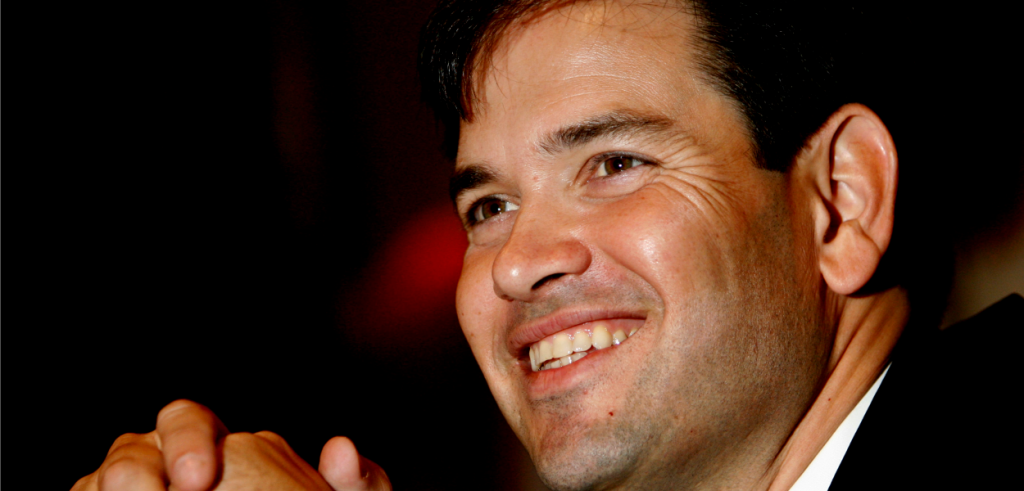There is little written about presidential announcements before the invention of TV. I envision a small audience, concise verbiage, and men in tights. Or perhaps I’m just remembering a scene from the HBO “John Adams” series.
While I’m not a presidential historian, it’s clear that a lot has evolved over the years. The crowds are larger and more intentionally diverse, the soaring rhetoric targets polled demographics, and media rules the day with tear-jerking videos and social media that welcomes us into the fold.
Today’s presidential announcement involves a whole lot of pomp and circumstance. And if a candidate is going to stand out and capture America’s attention, there are three main areas where he/she needs to shine: setting, script and social media.
Setting
The setting matters because it’s an opportunity to tell a candidate’s story through pictures instead of words. And imagery is powerful.
The first televised announcement came from a man that embraced technology and used it to his advantage. On Jan. 2, 1960 (before the memorable first televised presidential debates), John F. Kennedy announced his candidacy in the Senate Caucus Room.
It was concise and simple. But it was a new way of communicating, and JFK’s camera-ready presence set him apart.
Since that time a variety of settings have been tried. The outside venues create their fair share of problems due to uncontrollable wind (Jon Huntsman 2012) or a bright sun that prevents a candidate from reading the teleprompter (Tim Pawlenty, also 2012).
But relocating inside isn’t a sure bet either.
In 2007, Hillary Clinton tried to appear relatable by sitting on a couch to announce her candidacy with the obligatory soap opera fuzzy-filter lens.
The audience didn’t buy it, because a housewife she is not. And to this day, Saturday Night Live’s depiction of the former secretary of state often shows her sitting on a couch.
The setting matters. And if a candidate gets it wrong, he/she runs the risk of looking unpresidential.
Script
While imagery matters, you still need a script. And the best announcements have come from individuals who knew where to stand and what to say to great effect.
In 2007, Obama announced his candidacy in front of the Old State Capitol in Springfield, Ill. where Abraham Lincoln once stood. Obama, like Lincoln, understood the power of words, and made references to Lincoln throughout. He mentioned that the 16th president was once not too well known and then called on America to “stand together” like Lincoln once did. It was a home run.
This brings us to today’s announcement. Sen. Marco Rubio, R-Fla., will announce his candidacy in Miami in front of the Freedom Tower where, as he said to the Miami Herald, “Literally, five decades ago, tens of thousands of people came here after losing their country and began their new life.”
Rubio is a master at communication, and he’s going to need it. The 2013 “Gang of Eight” comprehensive immigration bill that he backed and then failed to pass is still fresh in many people’s minds.
This setting may remind people of that failure, so his script needs to tell the rest of the story. He can’t just talk about the American Dream. He needs to sell himself worthy of the title commander in chief. If he does, he’ll see a huge spike in the polls.
When the setting and the script work together, it can be a powerful thing. But it is also about getting it out to the masses since most people don’t sit through an entire production.
Social Media
While the media tour following an announcement is expected, I find the use of video and social media to be a fascinating part of today’s announcements.
Sen. Rand Paul, R-Ky., used numerous videos during his announcement. They included one of everyday-Joe’s talking about economic issues and one featuring his wife.
But most notable was the video trailer released several days in advance of his announcement with movie-score music and media clips of liberal hosts saying great things about him. No doubt having young people in his corner helped him dominate the video category and ramp up enthusiasm for him as a candidate in the 2016 presidential race.
In contrast, the use of video in Hillary Clinton’s campaign sought to take attention away from her and her announcement. Not only did she announce on a Sunday (a throw away day), she didn’t even appear in the video till 1:35 minutes in. Fortunately, she ditched the living room furniture and took it outside, hoping to convey that she’s ready to get her hands dirty.
Using social media to release the video announcement may also be an attempt to show she’s current – “I tweet!” But I wonder if using technology will make people think of that pesky email server? Time will tell if she got the setting right this presidential cycle.
With many more potential candidates waiting in the wings and the campaign season getting longer and longer with each presidential cycle, at least the pomp and circumstance will keep us entertained along the way.
